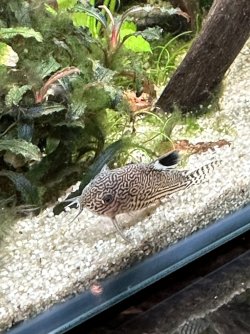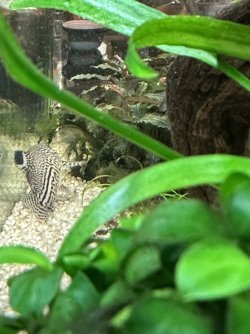Neonlights
Fish Fanatic
Two days ago when I was doing some tank maintenance my cory began shooting all over the tank like mad. Yesterday I noticed he was slightly off balance and he looks the same today so I looked more closely and can see two small vertical scratches on one side that are bright red.
I’ve just put in my last 5ml of stressguard (apparently they stopped selling it in the UK) and unfortunately I’ll now be away for 4 days (!). Is there anything I should do or can do to help him heal?
I’ve just put in my last 5ml of stressguard (apparently they stopped selling it in the UK) and unfortunately I’ll now be away for 4 days (!). Is there anything I should do or can do to help him heal?



